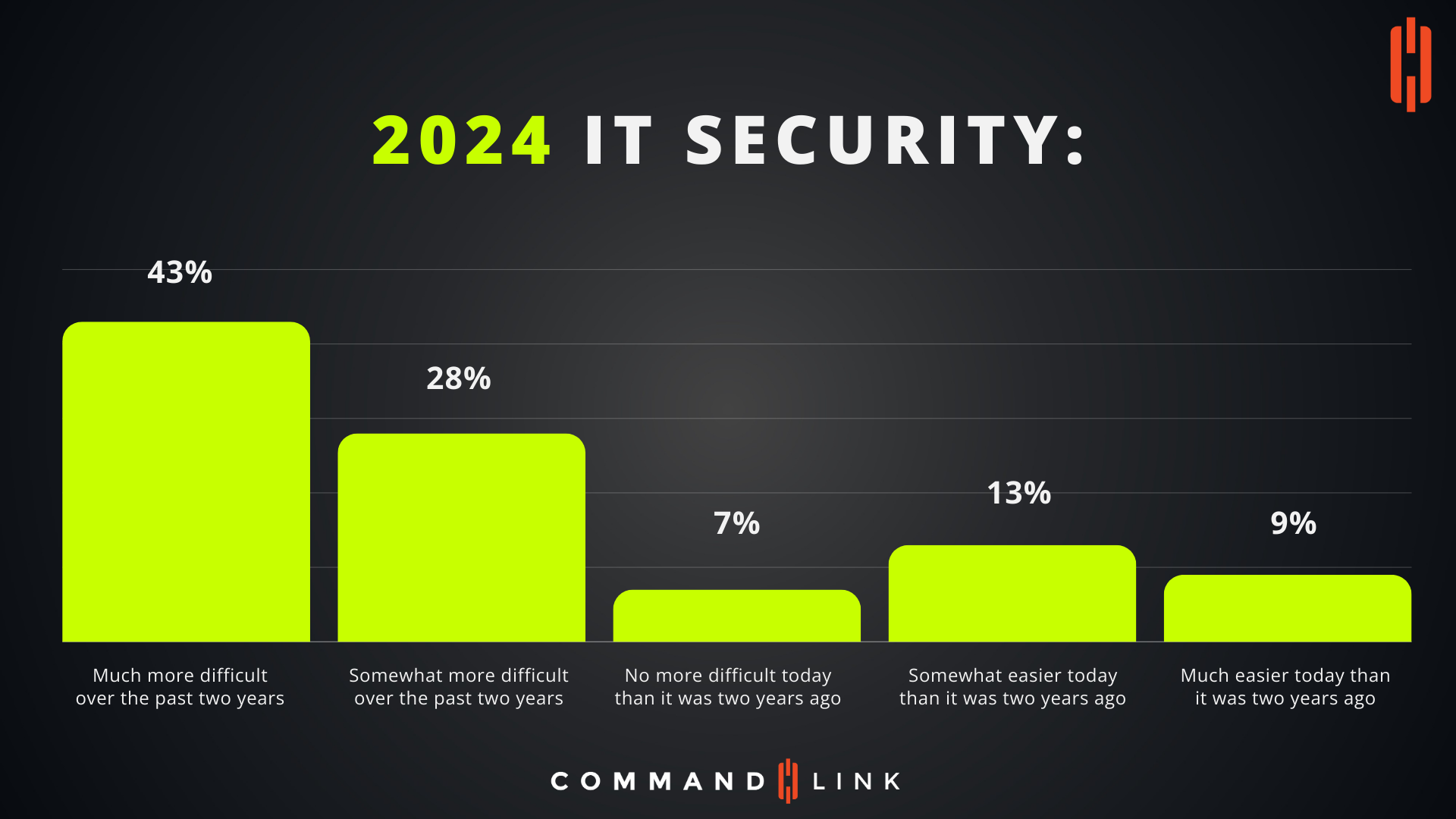Platform
Platform
Everything you need to run a secure global network—in a single system.
Solutions
Solutions
Learn how our solutions were designed to help you scale your IT resources
Company
CommandLink
Let's talk about how we can help you!
Partners

1. Much More Difficult Over the Past Two Years (43%)
A significant 43% of respondents believe that IT security has become "much more difficult" over the past two years. This substantial percentage highlights the growing complexity and sophistication of cyber threats. Several factors contribute to this perception:
2. Somewhat More Difficult Over the Past Two Years (28%)
Another 28% of respondents feel that IT security has become "somewhat more difficult." This group likely acknowledges the increased challenges but may feel that these challenges are manageable with the right resources and strategies. This sentiment might be driven by:
3. No More Difficult Today Than It Was Two Years Ago (7%)
A smaller portion, 7% of respondents, believe that IT security is "no more difficult today" than it was two years ago. This minority view may reflect organizations that have robust, mature security practices in place or that operate in less targeted sectors. These organizations might feel confident in their ability to manage ongoing threats without significant changes to their security posture.
4. Somewhat Easier Today Than It Was Two Years Ago (13%)
Interestingly, 13% of respondents feel that IT security is "somewhat easier" today than it was two years ago. This perception could be due to:
5. Much Easier Today Than It Was Two Years Ago (9%)
Lastly, 9% of respondents feel that IT security is "much easier" today. This group is likely benefiting from significant advancements in security technology, streamlined processes, and perhaps a less challenging threat environment relative to their specific circumstances. This could include:
The perceptions of IT security's difficulty over the past two years vary widely, reflecting the diverse experiences of organizations in dealing with cybersecurity challenges. While a large majority see IT security as becoming more difficult, a noteworthy percentage feel that improvements in technology, processes, and awareness have made it easier to manage.
These findings underscore the importance of staying ahead of cybersecurity trends by continuously investing in advanced security technologies, improving staff training, and adapting to the evolving threat landscape. Organizations that do so will likely find themselves better positioned to protect their assets and maintain business continuity in the face of growing cyber threats.